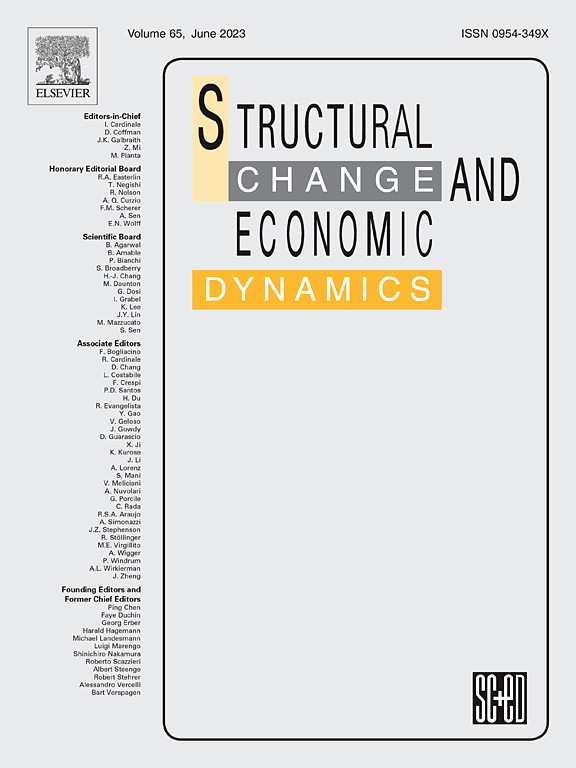Aggregation effect of economic freedom and total factor productivity growth with biased technological change
IF 5.5
2区 经济学
Q1 ECONOMICS
引用次数: 0
Abstract
Economic freedom has an important impact on total factor productivity (TFP) growth; however, the impact of different sources that comprise economic freedom is not clear and the effect of biased technological change has not been considered. This paper presents an exploration of the impact of economic freedom on TFP growth with biased technological change in terms of heterogeneity in the composition of economic freedom. This paper uses the Economic Freedom Index and its five subdimension indices from the Fraser Institute, introduces the biased technological change hypothesis, and demonstrates the impact of economic freedom and its aggregate effects on TFP growth with biased technological change. Panel analysis was conducted using data from 64 sample economies between 1980 and 2019. The empirical test results indicate the following: First, an increase in the level of economic freedom has significantly promoted TFP growth with biased technological chang but excessive economic freedom leads to a reversal in TFP growth with biased technological change, which can be mitigated by effective improvements in government size. Second, economic freedom in different dimensions and sectors not only independently influences TFP growth with biased technological change as an individual factor within a systemic whole but also collaboratively affects TFP growth with biased technological change to produce complex aggregation effects. Especially when promoting international trade and investment freedom, choosing to indiscriminately relax credit, labor, and business regulations may stimulate excessive flows of international capital and speculative activities, thereby worsening TFP growth with biased technological change.
偏倚技术变革下经济自由与全要素生产率增长的聚集效应
经济自由度对全要素生产率(TFP)增长有重要影响;然而,构成经济自由的不同来源的影响尚不清楚,而且没有考虑到有偏见的技术变革的影响。本文从经济自由构成的异质性角度探讨了经济自由对技术变化偏倚的全要素生产率增长的影响。本文采用弗雷泽研究所的经济自由指数及其五个子维度指数,引入偏性技术变革假说,论证了偏性技术变革下经济自由及其总体效应对全要素生产率增长的影响。小组分析使用了1980年至2019年64个样本经济体的数据。实证检验结果表明:第一,经济自由水平的提高显著促进了偏倚技术变革下的TFP增长,但过度的经济自由会导致偏倚技术变革下的TFP增长出现逆转,这种逆转可以通过政府规模的有效改善来缓解。第二,不同维度和部门的经济自由不仅作为系统整体内的个体因素独立影响有偏技术变革的全要素生产率增长,而且协同影响有偏技术变革的全要素生产率增长,产生复杂的聚集效应。特别是在促进国际贸易和投资自由时,选择不加选择地放松信贷、劳动力和商业监管,可能会刺激国际资本和投机活动的过度流动,从而恶化TFP增长,并导致技术变革的偏向性。
本文章由计算机程序翻译,如有差异,请以英文原文为准。
求助全文
约1分钟内获得全文
求助全文
来源期刊

Structural Change and Economic Dynamics
ECONOMICS-
CiteScore
9.60
自引率
4.90%
发文量
159
期刊介绍:
Structural Change and Economic Dynamics publishes articles about theoretical, applied and methodological aspects of structural change in economic systems. The journal publishes work analysing dynamics and structural breaks in economic, technological, behavioural and institutional patterns.
 求助内容:
求助内容: 应助结果提醒方式:
应助结果提醒方式:


